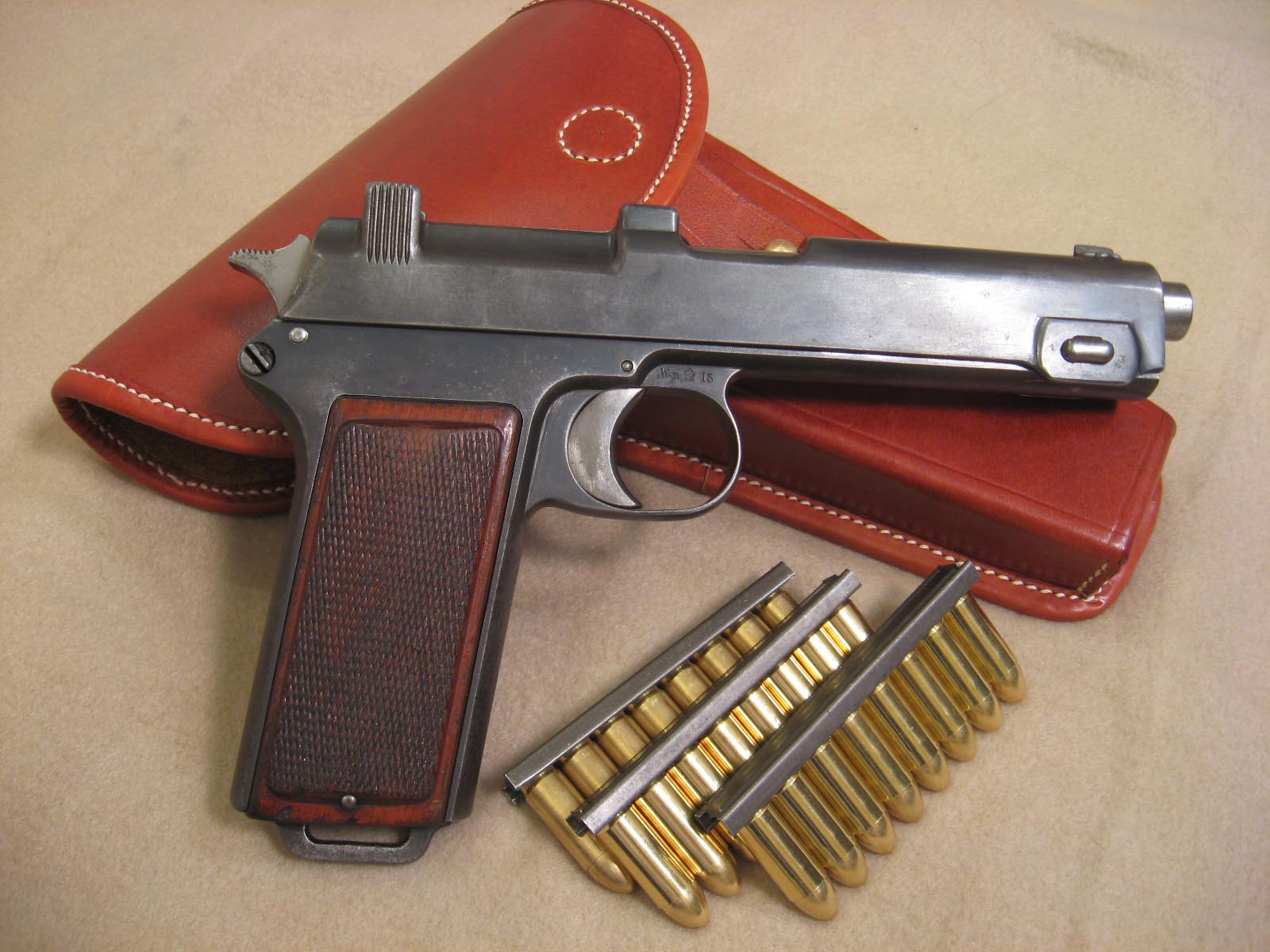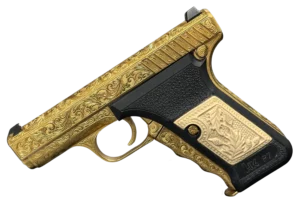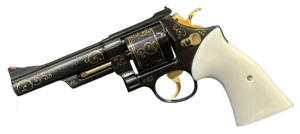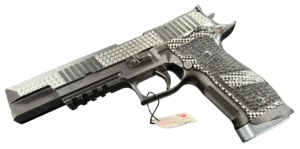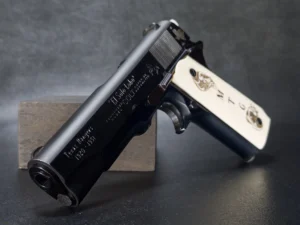Key Takeaways:
- The Steyr-Hahn M1912 wasn’t just another sidearm—it broke the mold: With its rotating barrel, fixed magazine, and stripper clip loading system, this pistol took a very different route from its contemporaries. And guess what? It worked. While others followed the Browning blueprint, Steyr and Krnka weren’t afraid to try something unconventional, and their bold choices paid off in both performance and longevity.
- Durability and reliability made it a battlefield favorite: The M1912 proved itself under some of the worst conditions imaginable—mud, cold, and chaos on the front lines of two world wars. Soldiers didn’t need to baby it. Whether in the trenches of WWI or repurposed in WWII, it earned its keep with a reputation for being solid, steady, and surprisingly low-maintenance.
- Today, it’s not just a collector’s piece—it’s a story in steel: Owning a Steyr-Hahn is like holding a snapshot of early 20th-century innovation. From its quirky mechanics to its historic role in two global conflicts, this pistol embodies a pivotal moment in the evolution of firearms. It’s a reminder that not all legends make headlines—some keep firing.
It’s easy to overlook the Steyr-Hahn M1912—tucked between flashier sidearms like the Colt 1911 and the Luger P08—but this Austrian pistol helped chart the course for modern semi-automatic handguns in ways that still echo today. Built like a tank and surprisingly advanced for its time, the M1912 wasn’t just ahead of the curve—it redrew it.
Adopted by the Austro-Hungarian Army just in time for World War I, the M1912 was anything but ordinary. Its rotating barrel locking system and unique 9mm Steyr cartridge set it apart from just about everything else in military service. And rather than relying on detachable box magazines, it stuck with a fixed one, fed from the top using stripper clips. Quirky? Maybe. Effective? Definitely.
Even decades later, the pistol still managed to serve in World War II—rebadged as the Pistole 12(Ö) by German forces—which tells you just how durable and functional this design really was. Today, it’s a collector’s favorite, not just for its scarcity, but because of what it represents: a rare moment when innovation, craftsmanship, and military need all lined up.
From Blueprint to Battlefield: How the M1912 Came to Be
Let’s rewind to the early 1900s, a time when the revolver was still king but semi-automatics were starting to poke their heads into military armories. Europe was preparing for the worst, and the scramble for modern firearms was in full swing. Enter Steyr Mannlicher, a company with a long history of making rifles and a growing ambition to conquer the pistol market.
They weren’t starting from scratch. Much of the groundwork came from Karel Krnka, a Czech firearms designer with a talent for bold mechanical ideas. His rotating barrel concept had shown promise in earlier prototypes, but Steyr took it and ran with it. The result? A gun that locked up solidly and shot flat, especially with the custom 9mm Steyr round created specifically for it.
And when the Austro-Hungarian Army signed off on the pistol in 1912, the shift was more than symbolic—it was practical. With that decision, the army said goodbye to revolvers and embraced the new age of automatic sidearms. The M1912 wasn’t just a new pistol; it was a statement.
Steyr’s Big Moment
To really appreciate the M1912, you need to know where Steyr Mannlicher came from. The company had been around since the 1860s, and by the early 20th century, it was already a respected name in European firearms. Their bolt-action rifles were battle-tested. Their engineers knew metal like artists know canvas.
So when militaries began looking beyond revolvers, Steyr didn’t hesitate. They leaned hard into innovation, spending time and money refining semi-automatic platforms. They weren’t content to simply copy what others were doing—they wanted something better. The rotating barrel system was a direct result of that mindset. It wasn’t the easiest path, but it sure was an original one.
Built to Last: Design and Mechanics
The M1912 isn’t a dainty gun. It’s long, hefty, and proudly overbuilt. At just under 2.5 pounds unloaded, it’s not the lightest thing on the belt, but that mass does wonders for managing recoil.
The action is where the real magic happens. Instead of a standard tilting barrel like the Browning systems that became so popular, the Steyr-Hahn uses a rotating barrel that turns to lock and unlock as the slide cycles. That might sound a little strange, but it’s remarkably smooth in action and helps keep the gun stable under fire.
Some quick specs for context:
- Length: 8.5 inches
- Barrel: 5.1 inches
- Weight: About 2.4 pounds
- Cartridge: 9mm Steyr
- Magazine: 8-round internal, loaded via stripper clip
Other features? A solid single-action trigger, fixed sights, and a large external hammer that makes cocking easy and familiar. It’s not flashy—but every piece feels like it belongs. And the wooden grips? A small touch of old-world charm on an otherwise utilitarian machine.
The Rotating Barrel: Clever, Odd, Effective
Most pistols of the day relied on blowback or tilting barrel systems. The Steyr-Hahn took a different road. With Krnka’s rotating barrel setup, the barrel itself turns slightly during recoil to unlock from the slide. It’s mechanically elegant and surprisingly resilient to wear.
Why go this route? Well, for starters, it tames recoil quite nicely. That rotation helps spread out the forces, leading to better shot-to-shot stability. It also makes for a strong lockup, which likely played a role in the pistol’s longevity on the battlefield.
In short, it was a gutsy choice—and one that still fascinates gun nerds and engineers alike.
Loading It Up: A Bit Old-School, But It Works
Here’s where things get a little unusual. Instead of a removable magazine, the M1912 has a fixed, internal one. And you load it from the top using an 8-round stripper clip. Yes, it’s slower than swapping mags, but it’s not as clunky as it sounds.
With a little practice, reloading becomes fairly quick. Pop the clip in, push the rounds down into the magazine, pull the clip out, and you’re ready to go. It’s reminiscent of bolt-action rifles, which makes sense considering the era and military training at the time.
The pistol handles well too. It’s heavy, yes, but in a way that inspires confidence. The weight balances recoil, and the controls—manual safety, hammer, trigger—are intuitive. You don’t need to baby this gun; it wants to work.
On the Front Lines: The M1912 in Action
The Steyr-Hahn’s military career was long and storied. It debuted with the Austro-Hungarian Army in 1912 and was quickly put to the test in the muddy chaos of World War I. Soldiers came to appreciate its durability—this was a sidearm that didn’t easily jam, didn’t fall apart, and could take a beating.
Fast-forward a couple decades, and the M1912 was still going strong. When German forces took control of Austria, they adopted the pistol and designated it the Pistole 12(Ö). That kind of second-life usage wasn’t common, especially for pistols that were, by then, nearly three decades old.
So why did it stick around so long? Because it worked. Plain and simple.
Variations on a Theme: International Service
Like many successful weapons, the M1912 didn’t stay confined to one army. Different variants emerged—some chambered in different calibers, others marked for various national services. A few countries even produced it under license.
While the changes were minor, they speak to the gun’s flexible core design. Whether it was in Austria, Germany, or beyond, the M1912 proved adaptable. That’s not easy to pull off in military hardware.
Why Collectors Still Care
These days, the Steyr-Hahn is more than just an old war pistol—it’s a piece of industrial art. Collectors chase after them for the engineering, the rarity, and the sheer historical weight they carry.
Original examples with wartime markings or unique serial blocks are especially prized. And that rotating barrel? It’s a technical curiosity that still gets collectors talking. It’s a window into a time when engineers weren’t afraid to try something different.
Stacking Up Against the Competition
Put the M1912 next to something like the Colt 1911, and the contrast is clear. The Colt went on to become the standard-bearer, using a tilting barrel and detachable magazine. The Steyr took a different approach—one that may not have been as scalable, but certainly stood out.
Stripper clips instead of box mags. A rotating barrel instead of tilting. It didn’t follow the herd, and that’s what makes it special.
Final Thoughts: A Gun Ahead of Its Time
The Steyr-Hahn M1912 wasn’t the most famous pistol of its era, but it may have been one of the most forward-thinking. With its sturdy build, rotating barrel, and reliable function, it punched far above its weight—and stuck around longer than anyone expected.
It’s not just a footnote in firearm history; it’s a milestone. And for those who know what to look for, it’s a reminder that real innovation doesn’t always shout—it just keeps working.
Frequently Asked Questions
Great question. Unlike most semi-autos of the time, which used a tilting barrel system, the M1912 employed a rotating barrel to lock and unlock during firing. That wasn’t just for show—it genuinely helped manage recoil and improve shot stability. It also skipped the detachable magazine in favor of a fixed one that you loaded with an 8-round stripper clip. Unusual? Sure. But it worked beautifully in the field.
It’s chambered in 9mm Steyr—a cartridge specifically designed for this pistol. It’s not the same as 9mm Luger or 9x19mm, so if you’re thinking about shooting one today, you’ll want to double-check your ammo. Original 9mm Steyr rounds aren’t exactly stocked at your local sporting goods store, but there are specialty suppliers and reloaders who can help out.
Absolutely. It was officially adopted by the Austro-Hungarian Army in 1912 and saw heavy use during World War I. Later, the Germans reissued it during World War II under the designation Pistole 12(Ö). So yeah, this thing had staying power—decades of frontline service under brutal conditions.
It’s not as fast as slapping in a fresh magazine, but once you get the hang of it, reloading with a stripper clip is quicker than you might think. Insert the clip into the top of the action, press the rounds down into the fixed magazine, and then remove the clip. It’s a bit of a throwback to bolt-action rifle loading methods, which made sense for troops already trained that way.
“Better” depends on what you’re after. The rotating barrel offers excellent durability and helps spread recoil forces smoothly. That said, it’s more mechanically complex and fell out of favor as simpler designs proved easier to mass-produce. Still, for its time, the M1912’s system was a clever solution—and it’s part of what makes the pistol so memorable today.


